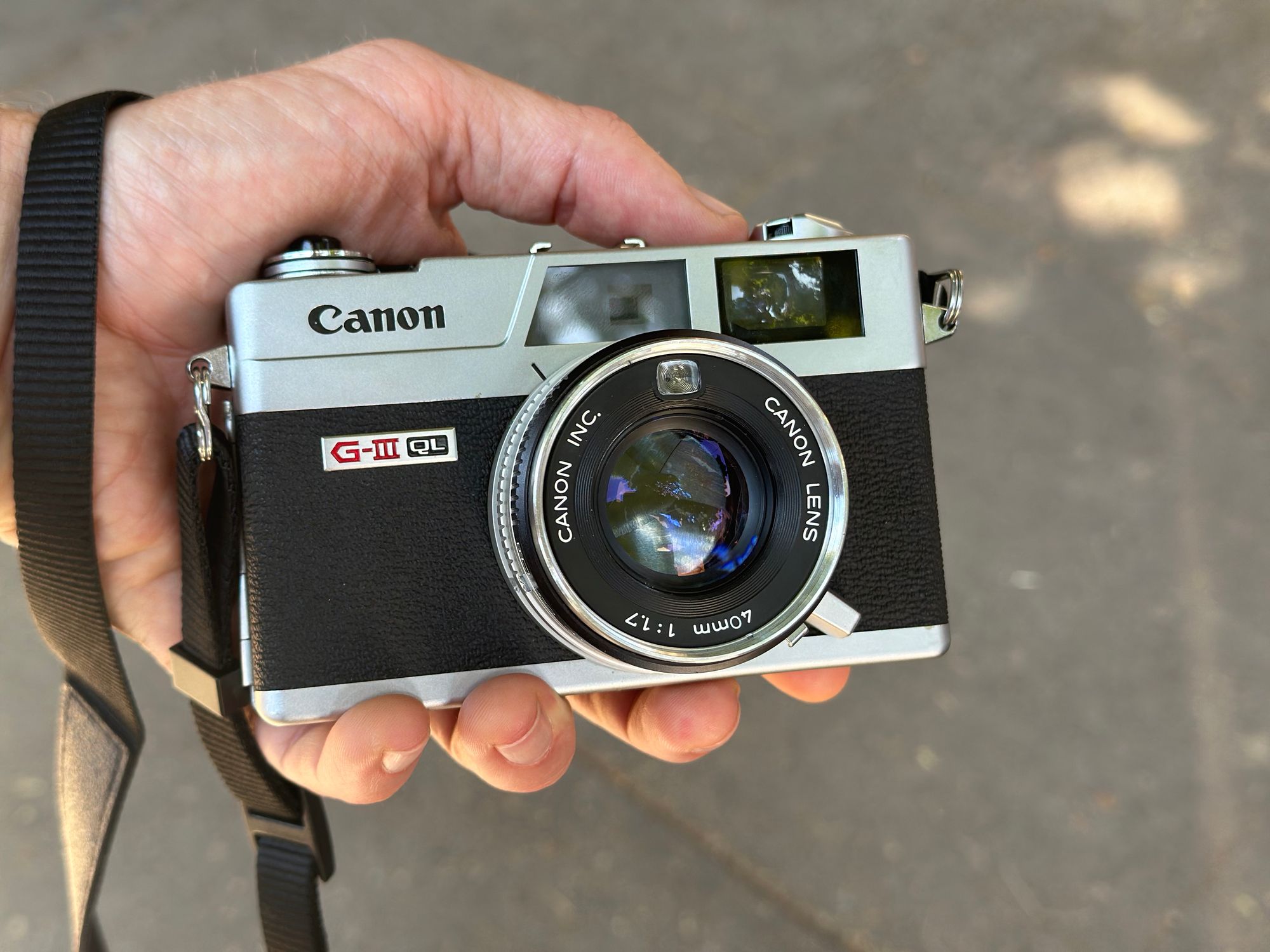PDX in Portra

My family flew out to Portand to visit my sister-in-law a couple of weekends ago. I didn't plan for this to be any kind of "photo trip," so I just packed my trusty x100v and didn't think much of it.
One day we were getting breakfast in the St. John's area (NW PDX) and my sister-in-law mentioned a cool analog camera shop (Blue Moon Camera) that had been featured in a documentary.
Somehow, my wife let me go in there alone and didn't think I'd walk out without a camera? This is still a mystery to me. (To be fair, she did have her hands full with our 4yr old and 7mo old).
After goggling at an XPan and some old Leica M3's and lenses, I ended up looking at a camera I had never heard of: A Canonet QL17 GIII — a consumer family point-and-shoot rangefinder with a fixed 40mm f 1.7 lens.
It's small, beautiful, discreet, and fun to use. It's amazing how even consumer grade film cameras from the 70's feel more premium compared to professional grade digital cameras today.

I haven't shot film since my Hasselblad 500cm medium format 5 or so years ago, which I since sold since it sat on my shelf collecting dust. The hassy is a beaut and produces incredible images, but the size of it just isn't condusive to everyday shooting, which is really what I have the time and energy for these day.
I'm a huge fan of Fuji's digital rangefinder cameras and have owned every version of the X100 line, an XPro1, and now the X100V and XPro 3 with the "Fujinon" primes. They are meant to emulate the experience of shooting with classic film rangefinders, so transitioning to a true film rangefinder camera felt...somewhat intuitive.

But transitioning into a film workflow in general was a bit rough. It's amazing how conditioned I am to "chimping" every shot, relying on my camera to nail the exposure (I typically shoot aperature priority and heavily use the exposure compensation knob), being able to preview exposure and film simulations before snapping a shot, and being essentially unlimited in how many shots I can take for any given day and time.
Shooting film changes all of that, of course.

Even though the the Canonet has a built in light meter, it's only so reliable, and I took it upon myself to try to determine exposure for most shots using the sunny 16 rule.
Shooting with a max shutter speed of 1/500th of a second in daylight means a lot of shots are f/16, and on a 40mm lens, that means practically everything is in focus. So, no more using bokeh as a crutch to produce "filmic/painterly" images.
Having 36 shots per roll (and the high cost of film and post processing) means I am forced to be significantly more intentional and selective with what I shoot and what I don't.
All of these constraints, though, lead to a shooting experience that is, in many ways, significantly more enjoyable.
I'm spending less time staring at shots on the digital screen on the back of my camera and way more time looking at light, estimating exposure, getting creative with composition, waiting for the perfect moment, and the quickly getting back into the present.
In short, I'm hooked.

More shots for subscribers below: